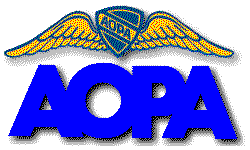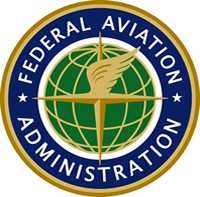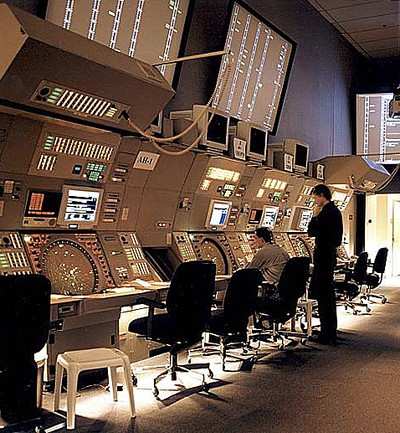NextGen Becomes Public/Private Partnership
 ANN APRIL 1st "SPECIAL"
EDITION: Aero-News has learned that intense negotiations
between officials of the Aircraft Owners and Pilots Association
(AOPA) and the Federal Aviation Administration (FAA) have resulted
in an end to the long impasse over user fees on general
aviation.
ANN APRIL 1st "SPECIAL"
EDITION: Aero-News has learned that intense negotiations
between officials of the Aircraft Owners and Pilots Association
(AOPA) and the Federal Aviation Administration (FAA) have resulted
in an end to the long impasse over user fees on general
aviation.
House Transportation and Infrastructure Committee Chairman James
Oberstar, a Minnesota Democrat who's been involved in the talks,
said the negotiations reached a turning point when AOPA proposed
splitting the air traffic control system at 18,000 feet MSL, with
the flight levels and airline hub airports to be administered by
the FAA, and the lower altitudes and smaller airports regulated by
AOPA. The compromise means most airline traffic will operate under
FAA control, and most small GA aircraft will fly within the AOPA
system.
AOPA President Phil Boyer said modern technology makes the split
system possible. “Today's technology makes phone calls
between different phone company systems transparent, and handles
the appropriate billing without issues,” said Boyer.
“There's no reason why we can't build an interface which does
the same for ATC. We envision data from the FAA system showing up
on our system's control screens, and vice versa, in seamless
fashion.
“This will allow the FAA to concentrate on managing the
airlines, where its relationships lie, while preserving a
cost-effective system for general aviation,” said Boyer.
“It's a true win-win, and promises to put an end to the
bickering we see at the conclusion of every FAA funding
cycle.”

Under the proposal, the FAA portion of the system will be funded
by revenues sourced from the US treasury general fund, per-ticket
fees on airline passengers, taxes on jet fuel, landing fees at the
hub airports, and steep new fines for airlines which allow toilets
to overflow during tarmac strandings. The current unionized
controller workforce will be retained, and equipping airliners for
the FAA's NextGen will cost an estimated $42,000 per aircraft.
AOPA will pay for its low-altitude system by increasing its
annual dues to $65, and making ATC services available free to AOPA
members. Pilots flying in the low-altitude system without AOPA
membership will be charged user fees through an automated billing
system driven by ADS-B technology, augmented by ramp checks by the
Florida Department of Revenue. AOPA says its system will be largely
automated, using avionics under development by Casio, and costing
about $70 per aircraft, or $1,400 in applications requiring
TSO.
Reaction from within the industry has been mixed. James May,
President of the Air Transport Association, called the plan a good
start, but stressed his continued opposition to airline passenger
ticket fees, landing fees, and jet fuel taxes. “We'll
compromise to get things moving, but the airlines will continue to
vigorously oppose anything that unfairly pushes the uncontrollable
costs of mismanagement onto our own passengers and
stockholders.”
 Robert Poole, Director
of Transportation Studies for The Reason Foundation, said he hopes
the compromise will demonstrate to general aviation pilots that
user fees are every pilot's friend. “We've always said
general aviation needed a seat at the table when decisions
concerning the national airspace system are made,” he said.
“This plan will be a little like a crowded Thanksgiving
dinner, where GA pilots have a seat at the table, but it's at the
kids' table. At least they'll have control over whether they have
to eat pork.”
Robert Poole, Director
of Transportation Studies for The Reason Foundation, said he hopes
the compromise will demonstrate to general aviation pilots that
user fees are every pilot's friend. “We've always said
general aviation needed a seat at the table when decisions
concerning the national airspace system are made,” he said.
“This plan will be a little like a crowded Thanksgiving
dinner, where GA pilots have a seat at the table, but it's at the
kids' table. At least they'll have control over whether they have
to eat pork.”
“But most of all," said Poole, "this development will free
up time for our staff to develop better metaphors.”
Boyer says the plan provides AOPA with a chance to further
expand membership. “We know there are between 431 and 477
pilots in the US who are not yet AOPA members,” he revealed.
“We'd about run out of ways to draw them in. We're confident
they'll choose to pay a flat $65 per year, rather than pay much
more in user fees when they fly.”
To ensure a smooth transition and seamless interface between the
two systems, Lockheed Martin has been hired to handle the computer
networking.
AOPA says it's portion of the system is expected to be up and
functional in time for a debut coincident with the July 2008
edition of AOPA Pilot, and in time to allow explaining the details
to pilots at Boyer's town hall meeting at EAA AirVenture
Oshkosh.

FAA Acting Administrator Robert Sturgell said the high-altitude
portion of the system will be phased in gradually, with complete
functionality targeted for late 2062, anticipating delays in the US
Senate, and allowing the agency time to thoroughly evaluate the
performance of a similar system under development in Europe.
 Aero-News: Quote of the Day (04.28.25)
Aero-News: Quote of the Day (04.28.25) ANN's Daily Aero-Term (04.28.25): Decision Altitude (DA)
ANN's Daily Aero-Term (04.28.25): Decision Altitude (DA) ANN's Daily Aero-Linx (04.28.25)
ANN's Daily Aero-Linx (04.28.25) Airborne-Flight Training 04.24.25: GA Refocused, Seminole/Epic, WestJet v TFWP
Airborne-Flight Training 04.24.25: GA Refocused, Seminole/Epic, WestJet v TFWP Aero-News: Quote of the Day (04.29.25)
Aero-News: Quote of the Day (04.29.25)






